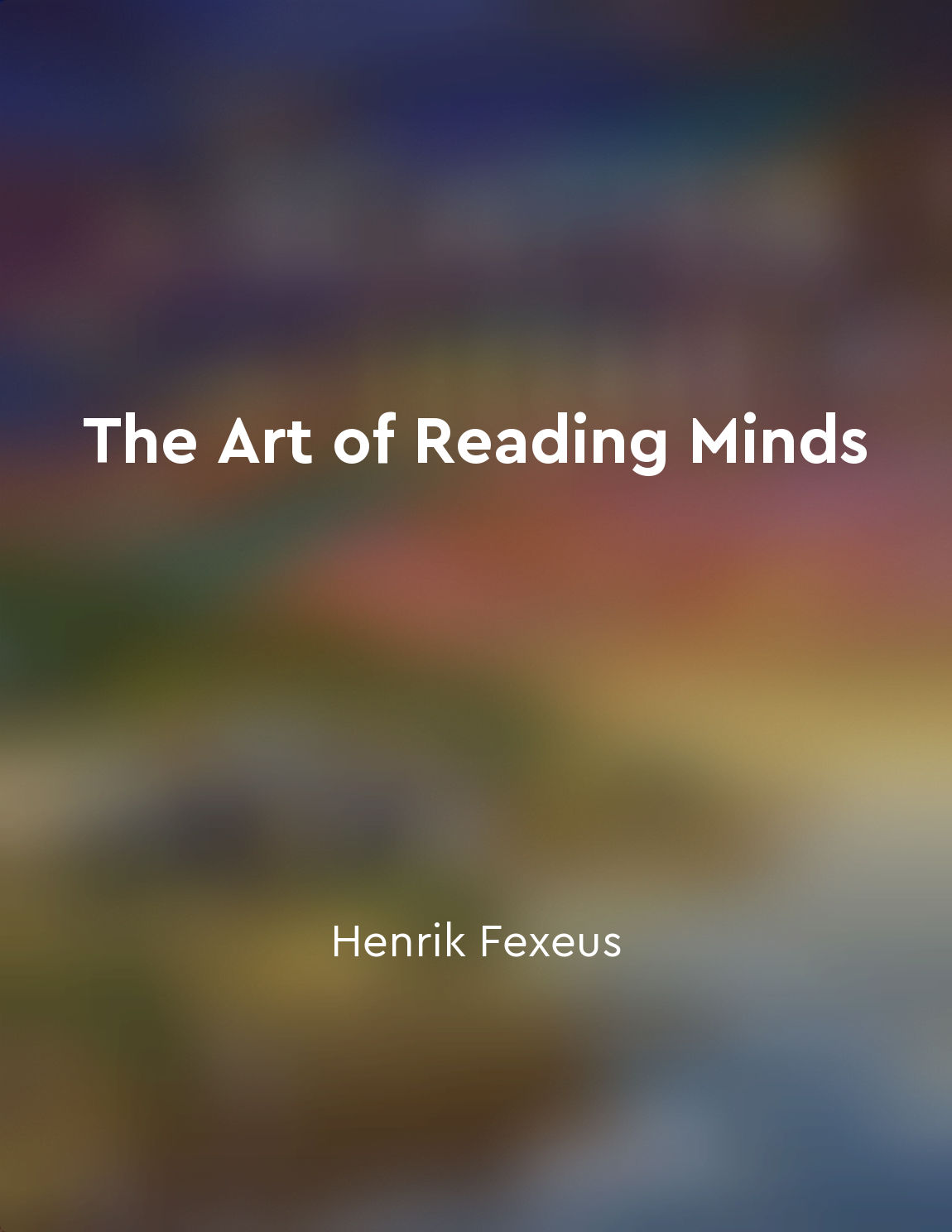Audio available in app
Recognize and respond to emotional cues from "summary" of The Like Switch by Jack Schafer,Marvin Karlins
Recognizing and responding to emotional cues involves paying attention to the subtle signals that people give off regarding their emotional state. These cues can include changes in facial expressions, body language, tone of voice, and even the words they use. By being attuned to these cues, you can gain valuable insights into how the other person is feeling and adjust your own behavior accordingly. When someone is happy, they may smile, make eye contact, and use positive language. In contrast, someone who is angry may display tense body language, avoid eye contact, and use aggressive language. By picking up on these cues, you can tailor your responses to better match the other person's emotional state. This can help you build rapport and establish a deeper connection with them. In order to effectively recognize and respond to emotional cues, it is important to practice active listening. This involves not only hearing what the other person is saying but also paying attention to how they are saying it. By focusing on both verbal and nonverbal cues, you can gain a more complete understanding of the other person's emotions and respond in a way that is empathetic and supportive. Additionally, it is important to be aware of your own emotional cues and how they may be influencing your interactions with others. If you are feeling stressed or upset, for example, this may affect how you interpret and respond to the emotional cues of others. By taking a moment to regulate your own emotions and approach the interaction with a calm and open mindset, you can better connect with the other person and build trust and rapport.- The ability to recognize and respond to emotional cues is a valuable skill that can enhance your relationships and interactions with others. By being attuned to the subtle signals that people give off, you can create a more positive and harmonious social environment where both parties feel heard and understood.
Similar Posts

Eye contact is a powerful form of nonverbal communication
Eye contact is a fundamental aspect of human interaction that can convey a multitude of messages without saying a single word. ...

Trust can be built or broken through conversations
Trust is a fragile entity that can be easily built or broken through the power of conversations. When we engage in dialogue wit...

Authority projection signals
Authority projection signals are powerful nonverbal cues that communicate dominance, control, and confidence. These signals can...

Eye contact is a powerful form of nonverbal communication
When we talk about the power of nonverbal communication, one of the most important aspects to consider is eye contact. This sim...
Empathy leads to greater emotional intelligence
In understanding the concept of empathy leading to greater emotional intelligence, it is essential to recognize the interconnec...
Transactional analysis can reveal subconscious motivations
When we delve into the world of transactional analysis, we uncover a treasure trove of insights into the human psyche. Through ...

Pay attention to body language for insights
When you are observing someone, pay close attention to their body language. It can provide you with valuable insights into what...
Avoid interrupting the other person while they are speaking
Interrupting someone while they are speaking is a common conversational pitfall. It often happens when we are eager to share ou...

Nonverbal communication is a universal language
Nonverbal communication is a universal language that transcends cultural barriers and is understood by people from all walks of...
Awareness of personal body language can enhance selfawareness
By being aware of our own body language, we can gain a deeper understanding of our own emotions, thoughts, and intentions. Our ...

